Subsection 4.11.2 States of Equilibrium
There are three states of equilibrium:
-
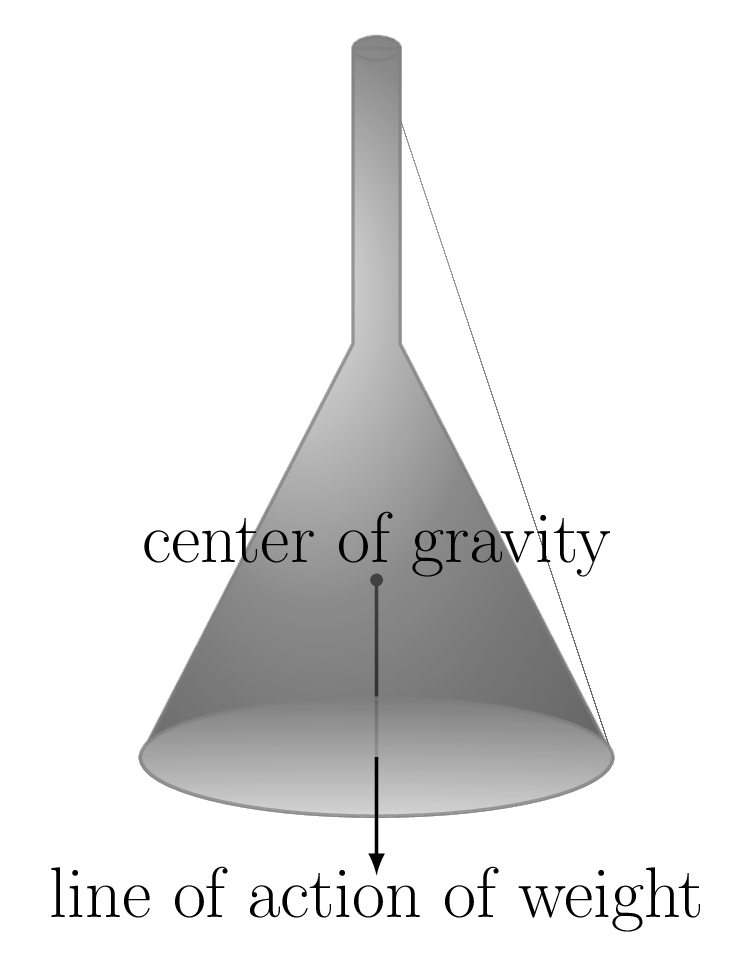
(a) 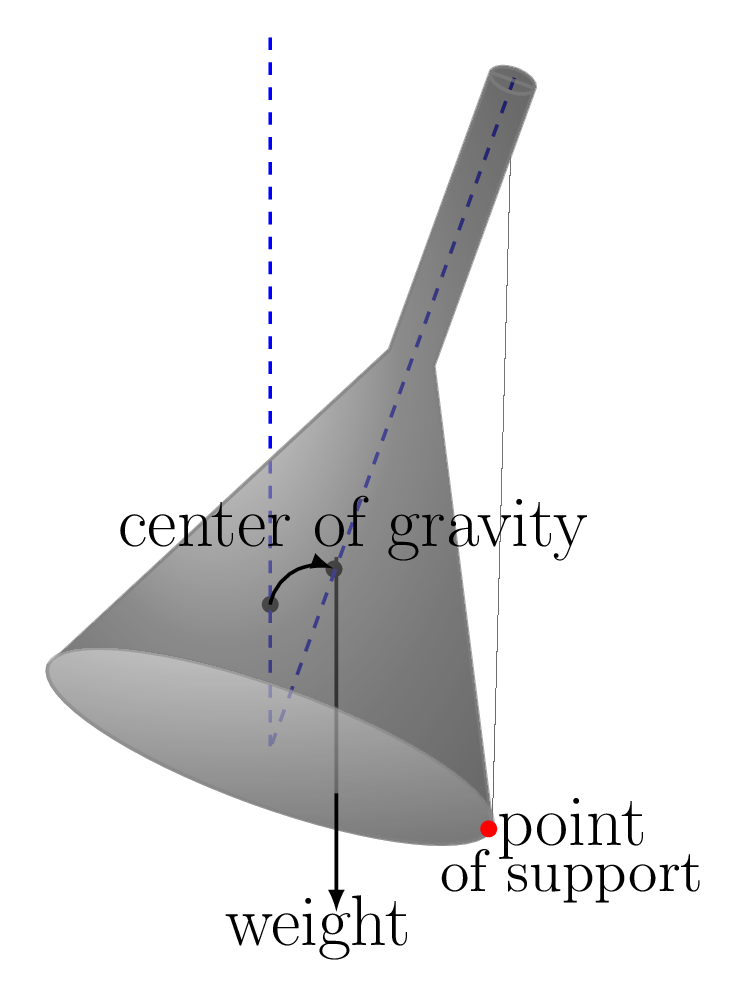
(b) 
(c) Figure 4.11.3. Stable equilibrium: The body is said to be in stable equilibrium if its center of gravity lies below lowest possible position. A funnel standing vertically on its base on the table is in stable equilibrium [Figure 4.11.3.(a)]. If the funnel is tilted a little bit against any side and then allowed to fall, it will come back to its original position. When the funnel is tilted against any side its center of gravity is raised [Figure 4.11.3.(b)]. The line of action of weight passes through the base of the funnel. As long as the line of action of weight remains inside the base area funnel will come back to the original position. A torque due to weight of the funnel brings it back to the original position. For the funnel to tip over the line of action of the weight arrow will have to form a clockwise moment (or to pass outside the point of support). The funnel needs to have been pushed a lot for tip over. Some examples of stable equilibrium are bodies lying on the floor such as chair, table, book, etc. If a system in stable equilibrium is disturbed slightly, it oscillates around that state first but eventually settles down in exactly the same position as it started [Figure 4.11.3.(c)]. It does this because its center of gravity is already at the lowest possible position. -
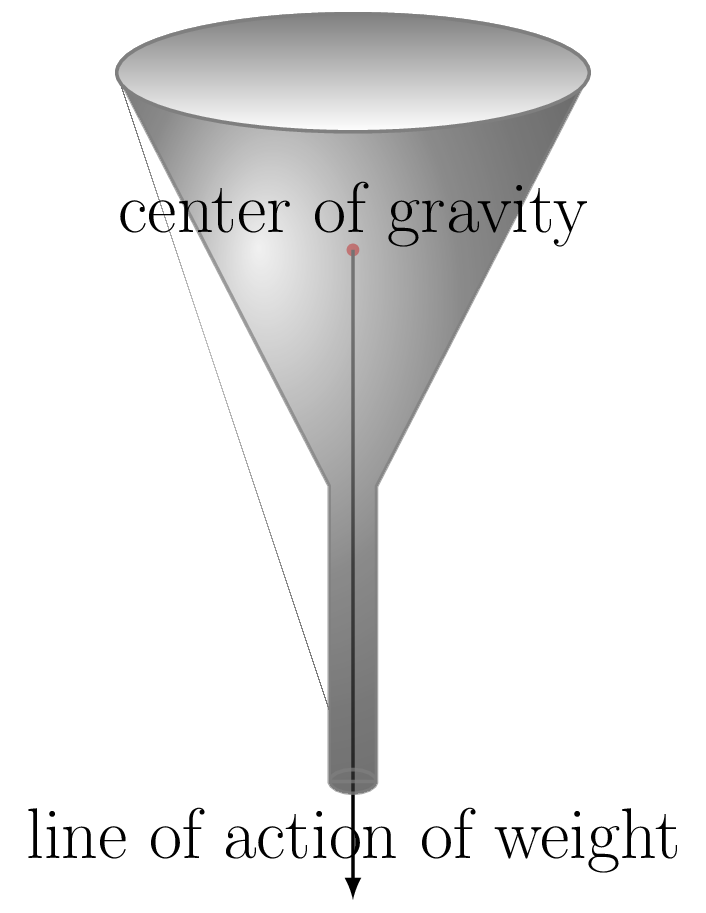
(a) 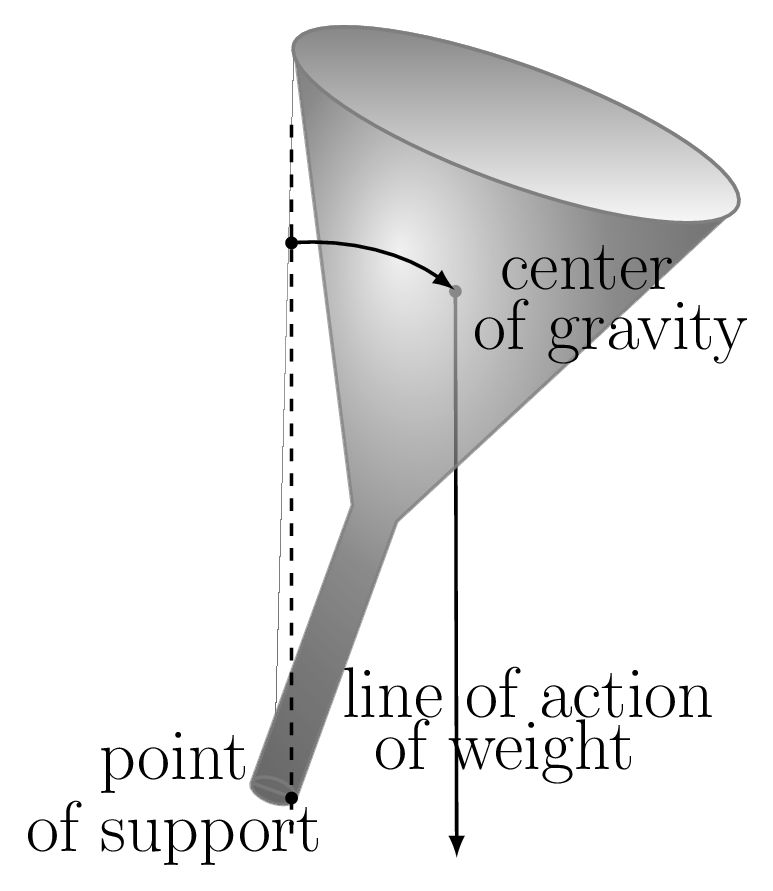
(b) 
(c) Figure 4.11.4. Unstable equilibrium: The body is said to be in unstable equilibrium if the center of gravity of a body lies above the highest possible position. A funnel standing vertically on its stem on the table [Figure 4.11.4.(a)] is in unstable equilibrium. If the funnel standing vertically is slightly disturbed from its position it will not come back to its original position rather fall down on the surface of table. when the funnel is slightly disturbed its center of gravity is lowered [Figure 4.11.4.(b)]. The line of action of its weight lies outside the base of stem. The torque due to weight of the rod toppled it down. Other examples of unstable equilibrium are vertically standing cylinder and pencil etc. An unstable system moves away from its original equilibrium state when disturbed. It wants to move away from the original position as soon as it has been disturbed [Figure 4.11.4.(c)]. It does this because its center of gravity is higher in this state and when disturbed the center of gravity continues to move to a lower position (a more stable one). -
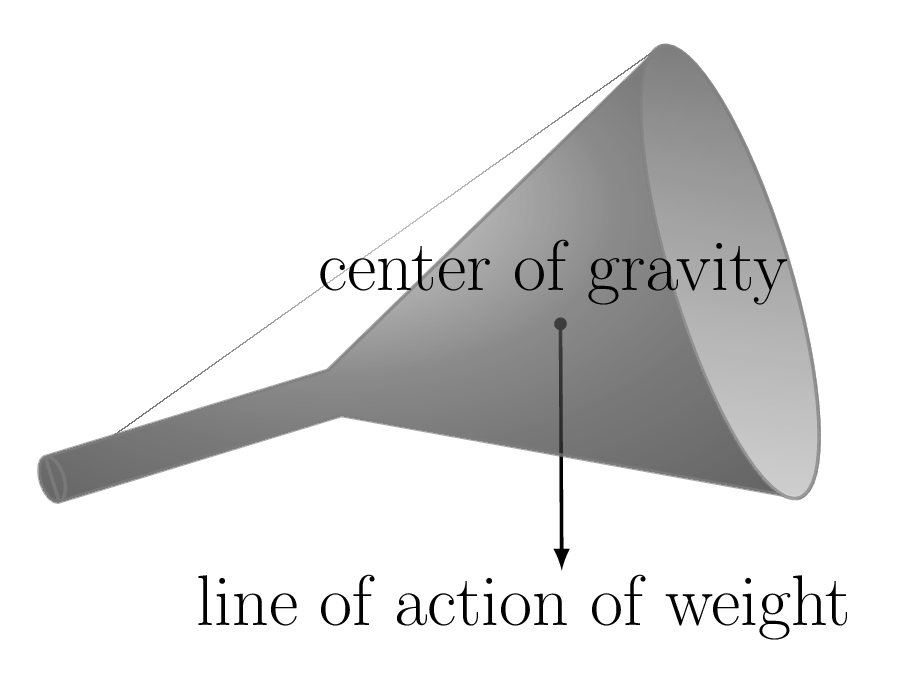
(a) 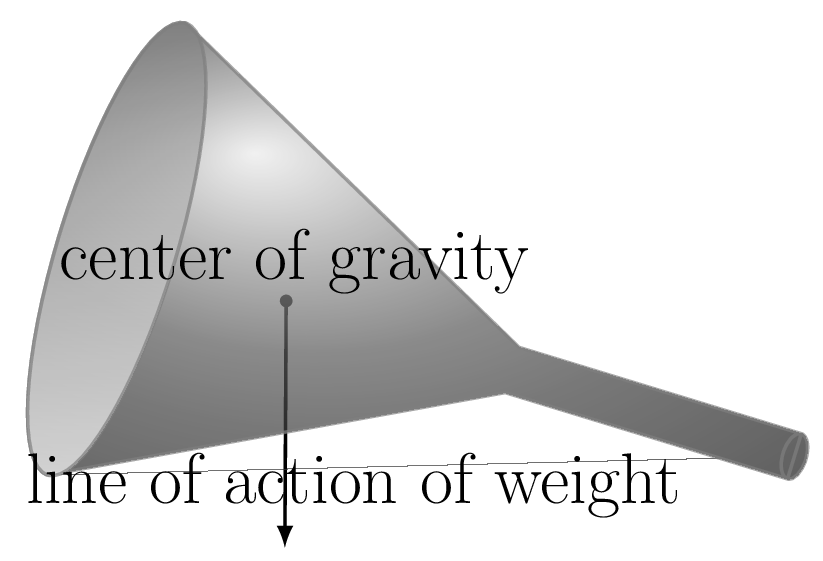
(b) 
(c) Figure 4.11.5. Natural equilibrium: The body is said to be in natural (neutral) equilibrium if the center of gravity of a body is at optimal position it is neither lowered nor is raised up. The object with lower center of gravity is more stable than the one with the higher center of gravity. A funnel lying horizontally on its side at rest on the surface of a table [Figure 4.11.5.(a)] is in natural equilibrium. If a funnel is pushed slightly to roll, it will neither come back to its original position nor it will roll forward rather it will remain at rest. If the funnel is rolled, its center of gravity is neither raised nor lowered [Figure 4.11.5.(b)]. This means that its center of gravity is at the same height as before. A neutral system is one where the center of gravity of the system is always at the same level. If it has been disturbed slightly it will therefore settle in the new position without a need to move further on or to move back [Figure 4.11.5.(c)]. For example, a rolling ball lying on the table.
